Curriculum
Student Wellbeing & Engagement
Wellbeing
At Carranballac College, we believe that the wellbeing of our students is enhanced and learning outcomes optimised when they feel connected to others and experience safe and trusting relationships. Students who feel connected, safe and secure are more likely to be active participants in their learning and to achieve better physical, emotional, social and educational outcomes. The promotion of their wellbeing is necessary to achieve success.
We focus on social and emotional learning, academic skills, social skills, emotional regulation and resilience. Wellbeing education and our College values are encouraged through the use of a variety of teaching strategies and resources relevant to each year level. These values inspire students to make positive choices in their learning and interactions with others.
We hold the care, safety and wellbeing of our students as a central and fundamental responsibility of our school. All programs aim to create a strong culture of wellbeing within the classroom and across the school to maximise learning and teaching.
SWPBS
Carranballac College is a ‘School Wide Positive Behaviour’ (SWPBS) School. SWPBS is a whole-school framework which provides school professionals with an approach to promote improved behaviour at their school.
SWPBS has been developed from evidence and data, demonstrating the most effective ways to prevent and respond to problem behaviour at school. Research has shown that SWPBS is successful in reducing problem behaviour, improving school culture, and increasing academic performance.
Our School Values are an integral part of the school community. They provide a foundation for shared understanding and a common language across the school for students, teachers and families.
Respect
Being honest and valuing ourselves, other people, property and privacy.
Responsibility
Behaving in an appropriate manner and making good decisions.
Resilience
Embrace new opportunities and skills and proactively face challenges.
Integrity
Being honest, reliable, fair.
Inclusiveness
Values differences and welcomes others.
Our School Values are fostered by:
- Encouraging and inspiring a love of learning;
- Celebration of the achievements of all students and staff;
- Promoting strong partnerships between school and home.
Our students follow our Values Matrix which helps them in all aspects of their social, emotional and academic learning.

Respectful Relationships
Respectful Relationships is a program that aims to empower children and young people to develop healthy, equal and respectful friendships and relationships. Classroom curriculum materials complement our existing wellbeing programs and philosophy. The Respectful Relationships program is enhancing our work around:
- Social Emotional Learning
- Personal Strengths and Positive Education
- Self-regulation, Positive Coping and Problem Solving skills
- Child Safety and Help Seeking behaviours
- Challenging gender-based violence
- eSafety
- Restorative Practice, Positive Behaviour Support and Anti-bullying programs.
Elements of Respectful Relationships, Berry Street, Smiling Mind and other wellbeing resources are used to plan the school’s Student Wellbeing programs.
Buddy Benches
We had so much fun creating our Carranballac College Wellbeing Buddy Benches.
Buddy Benches encourage students to look out for one another so no one feels left out. The benefits of the Buddy Bench are to combat isolation, encourage empathy and foster community.
4 Reasons to use the Buddy Bench
- If you are new to the school.
- If you want to make new friends.
- If your friends aren’t at school that day.
- If you want to play something different than what your friend is playing.
Wellbeing Team
Our wellbeing team consists of Principals, Assistant principals, Wellbeing Coordinator, Mental Health practitioner – Secondary and Mental Health and Wellbeing Coordinator (MHWC) – Primary and teachers.
Parents and Carers with concerns about their child’s learning or wellbeing are encouraged to speak with their child’s home-group teacher.
Carranballac College Rock Garden
We are created Carranballac College Values rock gardens at the Jamieson Way and Boardwalk campus.
The rocks have words or statements of how your child demonstrates our school values; respect, responsibility, resilience, integrity and inclusiveness.
Families were invited to participate by creating their rock at home with their children and then add them all to the Carranballac College Values rock garden.
We created a colourful garden of rocks that remind students of all the ways we can demonstrate our values. We continue to add to our garden and enjoy watching it grow.
Parent Resources
Smiling Mind is a fabulous organisation which you may find really useful as you search for ways to support your children. https://www.smilingmind.com.au/
Kids Helpline Kids Helpline | Phone Counselling Service | 1800 55 1800 https://kidshelpline.com.au
A free, private and confidential telephone and online counselling service specifically for young people between 5 and 25.
BRAVE Self-Help
https://brave4you.psy.uq.edu.au
‘BRAVE Self-Help’ is an interactive online program that helps young people manage their worry and anxiety. The program can be used on any computer or tablet device and includes up to 10 sessions that the young person can work through at their own pace. Parents can also take part in a separate parent prog
Parents and Carers | Daniel Morcombe Foundation
Wyndham Youth Directory – Youth Services
School Age (5-8 years) | Raising Children Network
The Royal Children’s Hospital : Patients Families (rch.org.au)
Student Voice & Learner Agency
As part of our strategic plan over the next 4 years we are investigating and developing work around Student Voice and Learner Agency. Presently we run our Student Leaders program and Student Representative Council but will develop opportunities further for all students to access and have a say in their learning. Research shows that students are far more likely to succeed in their academic endeavours if they are active learners. Of course it takes a while for students to work out where their strengths lie, what their learning preferences are and what they are most interested in. Our job as educators is to unlock these mysteries for the students. We aim to build the students’ capacity to talk about their learning by setting goals, discussing their learning and giving them a say in how they want to learn. We look forward to working with students to build their learner agency.
Carranballac College Rap 2025
English
English at Carranballac College incorporates the three modes of:
Reading and Viewing
Reading and Viewing involves students understanding, interpreting, critically analysing, reflecting upon, and enjoying written and visual, print and non-print texts. It encompasses reading and viewing a wide range of texts and media, including literary texts. Reading involves active engagement with texts and the development of knowledge about the relationship between them and the contexts in which they are created. It also involves the development of knowledge about a range of strategies for reading.
Writing
Writing involves students in the active process of conceiving, planning, composing, editing and publishing a range of texts. Writing involves using appropriate language for particular purposes or occasions, both formal and informal, to express and represent ideas and experiences, and to reflect on these aspects. It involves the development of knowledge about strategies for writing and the conventions of Standard Australian English. Students develop a metalanguage to discuss language conventions and use.
Speaking and Listening
Speaking and Listening refers to the various formal and informal ways oral language is used to convey and receive meaning. It involves the development and demonstration of knowledge about the appropriate oral language for particular audiences and occasions, including body language and voice. It also involves the development of active-listening strategies and an understanding of the conventions of different spoken texts

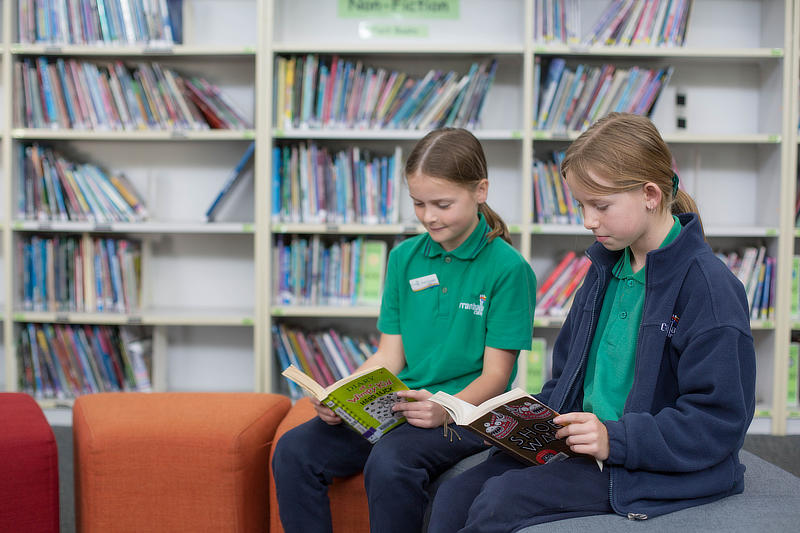
Maths
Maths (F-9)
Mathematics is the study of patterns, including related structures, shapes, quantities and probabilities. We all use Mathematics every day to do things including telling the time, predicting the weather and using money.
At Carranballac P-9 College we cover the Victorian Curriculum from Foundation to Year 9, including the strands of Number and Algebra, Measurement and Geometry and Statistics and Probability to make sure students have the mathematical foundation to successfully participate in society.
The Mathematics curriculum focuses on developing increasingly sophisticated and refined mathematical understanding, fluency, reasoning, modelling and problem-solving. These capabilities enable students to respond to familiar and unfamiliar situations by employing mathematics to make informed decisions and solve problems efficiently.
Online tools used to support students’ Mathematical knowledge across Foundation to Year 9 include:
Science
Science is a way of thinking, much more than it is a body of knowledge.
– Karl Sagen
Science is always changing based on people desiring to make sense of the world, investigating mysteries and testing previously known topics to create a new understanding of the Universe. It is about problem-solving, addressing issues that face our society today and into the future.
In the Carranballac Science Curriculum, students are explorers, investigators, questioners and critics. The program is designed to develop students’ critical and creative thinking skills: challenging themselves to ask questions about the world around them, and apply and test new ideas against evidence.
Through our program students have the opportunity to develop their skills and understandings of important scientific concepts and processes, particularly in theareas of physics, chemistry, earth Sciences and biology.
In Secondary Science we work with students to develop their Scientific inquiry skills from Year 7 to 9, designing units to cover the four areas of biology, chemistry, physics and earth and space.
Highlights of our program include:
- Year 7 Bunsen burner licence
- Year 7 STEM inquiry: how to get Nurdles out of the ocean environments
- Year 8 Science Fair
- Year 8 Physics investigation
- Year 9 Chemical investigations
- Year 9 How the brain works
Humanities
Humanities provides a look into our world, where students can examine and explore what defines us as people. In Humanities our students interpret, analyse, evaluate, compare and question to investigate the complex processes that have formed our modern world and how our interconnections link us to our environment.
At Carranballac P-9 College we cover the Victorian Curriculum from Foundation to Year 9. Humanities encompasses Civics and Citizenship, Geography, Business and Economics and History.
The study of Civics and Citizenship, sees our students looking at the rights and responsibilities of themselves, the wider community, Australia and globally. Students not only express their own views, but also learn to accept views of others. They develop their knowledge of our political and legal systems, creating informed citizens who value freedom, respect, compassion and equality.
When studying Geography our students use a range of concepts and skills to help them better understand how the earth works. These concepts and skills act a tool that our students will use to better understand our world. They cover topics such as Water in the World, Biomes, Food Security, Changing Nations and Landscapes and Landforms.
As a part of students study into Business and Economics, they investigate how people choose to use the limited resources of our Earth. Our study of Business and Economics surpasses the premise that it is all about money. It aims to develop our students thinking about how humans interact with each other on a local and global scale.
History is our final area of study for our students and is the study of our past. Our students will develop their historical thinking skills and knowledge through in-depth studies of historical periods. Some topics that our students will uncover include, Aboriginal and Torres Strait Islander peoples and culture, Ancient Egypt, Medieval Europe, the Industrial Revolution and World War 1.
Physical Education
‘Children deserve the best possible start in life. We know that giving children the best possible health, development and learning foundations will benefit individuals and families as well as our community and economy…’
Department of Education & Training
Physical Education Program Overview
F-2 Primary PE
Term 1
Minor Games
Fundamental Motor Skills i.e., running, underarm throw, catching, bouncing/ dribbling, kicking,
Term 2
Perceptual Motor Program (PMP)
Dance
FMS
- Netta Netball
- AFL Skills
- Locomotor – Run, hop, skip, jump
Term 3
Gymnastics/ Dance
Cooperative Games
Fitness Games
Term 4
On Track Athletics (modified)
Minor Games (Team)
3-4 Primary PE
Term 1
Athletics i.e., sprinting, long jump, triple jump, high jump, shot put, discus, shuttle relay
Cross Country trials
Basketball – technical skills
Term 2
Invasion Games
- Netball
- Handball
Net/Wall Games
- Bat Tennis
Term 3
Invasion Games
- Soccer
- AFL
- Hockey
Term 4
Minor Games
Striking & Fielding Games
- Joey Cricket
- T Ball
5-6 Primary PE
Term 1
Athletics i.e., sprinting, long jump, triple jump, high jump, shot put, discus, shuttle relay.
Cross Country trials
Fitness Testing
Term 2
Invasion Games
- Netball
- Rugby
Term 3
Invasion Games
- Soccer
- Basketball
- AFL
Term 4
Minor Games
Striking & Fielding Games
- Kanga Cricket
- T Ball
Secondary PE
Term 1
Minor Games
Fitness Testing
Athletics i.e., sprinting, long jump, triple jump, high jump, shot put, discus, circular relay.
Term 2
Invasion Games
- Rugby
- AFL
- Netball
Term 3
Invasion Games
- Lacrosse
- Hockey
Net/Wall Game
- Volleyball
Term 4
Minor Games/ Fitness
Striking & Fielding Games
- Badminton
- Baseball
Sport Education
Features of Carranballac P-9 College Sport Program
- Provide a quality school sport program that delivers the mandated hours for school sport.
- Develop in sequence the gradual acquisition and application of skills.
- Encourage high levels of student engagement through inclusive strategies and with opportunities to experience success.
- Provide opportunities to develop social competencies and problem-solving skills.
- Foster resilience and appreciation of achievements.
- Generate a level of wellbeing, encompassing fitness and enjoyment.
- Build an ongoing interest in sporting pursuits, which may lead to lifelong involvement in one or more sports or recreational activities.
Sport Program Overview
(Sport Training is Monday afternoons 3:30pm – 4:30pm)
Years 5-6
Term 1
Point Cook District (Primary) Interschool SUMMER Sport Round Robin Days Competition:
- Rounders
- Cricket
- Softball
- Basketball
Carranballac College Swimming Trials
Point Cook District Primary Swimming Carnival
Hobsons Bay Division Primary Swimming Carnival
Term 2
Point Cook District (Primary)Interschool WINTER Sport Competition:
- Football
- Netball
- Volleyball
- Soccer
Point Cook District Cross Country
Hobsons Bay Division Primary Cross Country
WMR Cross Country
Year 3-6 Carranballac College Athletics Carnivals (Term 2 or 3)
Term 3
Year level (school campus based) SPORT training & Competition i.e., SEPEP Model SPORT Education
* If successful at District level, school sport teams qualify for the Hobsons Bay Primary Division, SSV WMR / State Competitions
State Cross Country
Term 4
Year level (school campus based) SPORT training & Competition i.e., SEPEP Model SPORT Education
* If successful at District level, school sport teams qualify for the Hobsons Bay Primary Division, SSV WMR / State Competitions
Years 7-9
Term 1
Hobsons Bay Division SUMMER Sport Competition:
- Cricket
- Volleyball
- Netball
- Tennis
- Baseball (Boys)
- Softball (Girls)
Carranballac College Swimming Trials
Hobsons Bay Division Swimming Carnival
WMR Swimming Carnival
Term 2
Hobsons Bay Division WINTER (1) Sport Competition:
- Football
- Soccer
- Badminton
Hobsons Bay Division Secondary Cross Country
Carranballac College year 7-9 Athletics Carnival
WMR Cross Country
Term 3
Hobsons Bay Division WINTER (2) Sport Competition:
- Hockey
- Table Tennis
- Basketball
* If successful at Division Level, school sport teams qualify for SSV WMR / State Competition State Cross Country
Term 4
SEPEP Model SPORT Education
Students responsibility for certain roles e.g., Coach, Umpire, Score Keeper, Captain, Player
* If successful at Division Level, school sport teams qualify for SSV WMR / State Competition
Languages – Japanese
Konnichiwa!!
Japanese is the official language of Japan, a nation of islands located in the East Asia region. The Japanese language is also widely used by communities of speakers in Hawaii, Peru and Brazil, and learnt as an additional language by large numbers of students in the Republic of Korea, China, Indonesia and Australia. Japanese is the language used by the Japanese for various purposes, including education, business and media communication.
Japanese is a phonetic language. Japanese uses three scripts for writing: hiragana, the basic phonetic script representing the sounds of Japanese words; katakana, the companion phonetic script that is largely used for loan words; and kanji, Chinese characters that represent meaning rather than sound (ideographs).
At Carranballac P-9 College, students from Foundation to Year 7 learn Japanese. Students have the opportunity to develop their listening, speaking, reading and writing of the language through a variety of songs, folktales/stories, games, role plays as well as arts and crafts. Students also develop their cultural understanding through exploring different Japanese celebrations and traditions.
Resources
Foundation – Year 2 students utilise Seesaw to enjoy some Japanese songs and videos at home.
Students in Year 3-7 can utilise an app developed by the Japan Foundation to practise the hiragana at home. There are also some games and handwriting sheets with the mnemonic hints as well.
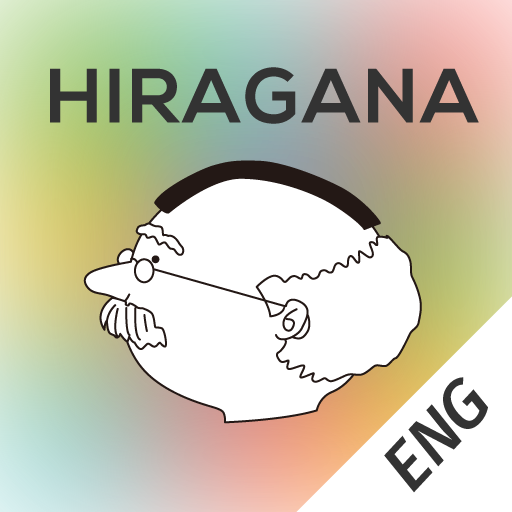
HIRAGANA Memory Hint is an app that allows you to learn hiragana in a fun way using mnemonic pictures. It includes plenty of quizzes for you to test your understanding. Recommended for complete beginners in Japanese or anyone with an interest in Japanese letters. Hiragana handwriting practise sheets with mnemonic hints: here
HIRAGANA Memory Hint English Version (Free)
Dr Lingua’s Learn Japanese Game: here
Hiragana bento drop: here
This Hiragana drag-n-drop game is for the Japanese alphabet (more correctly syllabic script) Hiragana. Drag and drop Hiragana kanas on to a Romaji kana grid.
Kana Grid: here
Kana Grid is an early Japanese learning game designed to familiarise players with the Hiragana Japanese scripts. Click the links to focus on a specific set of hiragana.
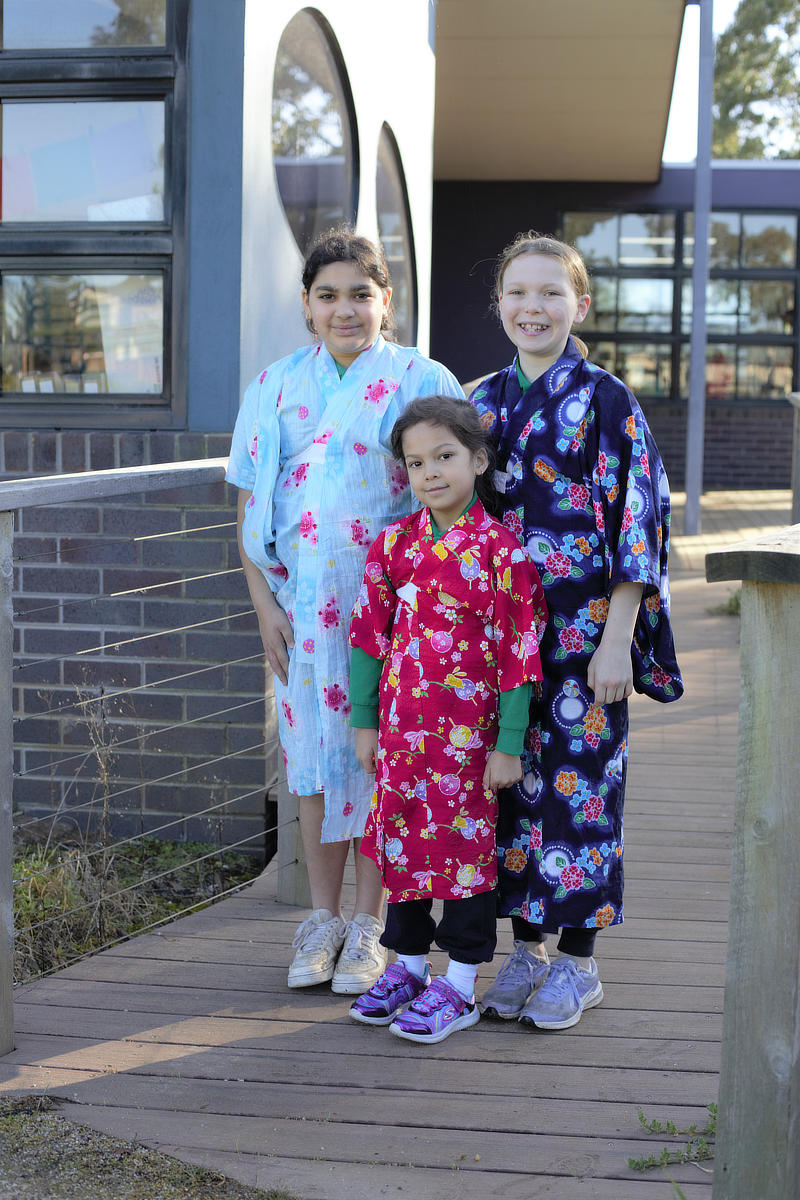
Ganbatte kudasai!
The Arts
The Arts Overview – Primary Art
At Carranballac P-9 College, students from Foundation to Year 9 are provided with the opportunity to experience all aspects of The Arts learning area.
Under the Victorian Curriculum F–10, The Arts learning area includes Dance, Drama, Media Arts, Music, Visual Arts and Visual Communication Design.
From Foundation to Year 6 students undertake a full year of both Music and Visual Arts. In the Middle Years (Years 7-9) student learning in The Arts is semester based.
Foundation
In Foundation students explore the visual arts making and sharing their artworks with peers. They experiment with basic art elements and develop fine motor skills.
Years 1 and 2
In Years 1 and 2 students develop their awareness of how and why artists, craftspeople and designers express their ideas through different art forms.
Years 3 and 4
In Years 3 and 4 students enhance their perceptual skills by observing the world around them and expressing these observations through different practical applications of art making.
Years 5 and 6
Students explore how and why artists, craftspeople and designers realise their ideas through different visual forms, practices and processes. They develop conceptual and expressive skills creating artworks based upon well-known artists.
The Arts Overview – Middle Years (Years 7-9)
In the Middle Years (Years 7-8) student learning in The Arts is semester based. Visual Art and Visual Communication are combined and delivered, running for one semester of the school year.
Year 7- Visual Art and Visual Communication
In term one students undertake Visual Arts learning activities, whilst in term two students undertake Visual Communication learning activities. In Visual Art students identify, analyse and evaluate how other artists use materials, techniques, technologies, processes and visual conventions to express ideas and convey meaning. In Visual Communication students are introduced to the design process and work to a variety of design briefs to communicate ideas.
Year 8- Visual Art and Visual Communication
In term one students undertake Visual Arts learning activities, whilst in term two students undertake Visual Communication learning activities. In Visual Arts students investigate a range of cultural artforms creating artworks using various mediums. In Visual Communication students further develop their skills when working to a design brief, creating visual communications for a specific purpose and target audience.
Year 9 Visual Arts- Overview and Structure
In Year 9 students engage in four different Visual Arts based units across the school year. Each unit runs for one term, the units offered are as follows, Make Your Mark, Photography, Comics to Manga and Visual Communication.
Make Your Mark- Year 9
In Make Your Mark students explore a range of contemporary and modern artists. Students create re-interpretations of works by artists such as Monet, Del Kathryn Barton, Charles Blackman and Yoshitomo Nara.
Photography- Year 9
In Photography students learn how to use a DSLR camera, using both automatic and manual camera functions. They learn how to construct creative photographs using compositional techniques, arts elements and principles.
Visual Communication- Year 9
In Year 9 Visual Communication students develop and present visual communications for a variety of design briefs. They learn how designers influence an audience using the design elements and principles and explore a range of ideas to communicate an effective message.
In Year 9 Comics and Manga students explore the stylistic conventions and themes that emerge in comics and manga. Students experiment in drawing characters using a variety of comic and manga styles. They develop concept drawings to create their own Superhero.
Music
Year Foundation – 2
Term 1
Students will learn to read and play basic rhythm patterns using ‘taa’ and ‘ti-ti’ on untuned percussion instruments with a focus on beat and rhythm.
Term 2
Students will continue to develop untuned percussion playing skills and learn to play tuned percussion correctly and safely with a focus on tone colour, tempo and dynamics. They will identify largo and presto in a range of musical pieces and understand tempo and dynamics when playing musical instruments.
Term 3
Students will have the opportunity to explore the musical elements of pitch, texture, tempo and dynamics through playing tuned percussion instruments. They will play through a range of musical pieces on a tuned percussion instrument to further develop their technique and skills.
Term 4
Students will compose a basic melody on tuned percussion and collaborate with others to create, notate and perform a simple group composition using various rhythms and music elements, tempo, dynamics and texture.
Year 3
Term 1
Students will have the opportunity to explore the musical elements of beat, rhythm, tempo and dynamics though experiences such as movement, body percussion, playing instruments and reading and writing percussion notation. They will build teamwork skills when working in small groups to create, notate and perform creative and multiple part body percussion rhythms.
Term 2
Students will be introduced to the ukulele and learn the correct technique when playing the instrument. They will learn how to play simple strumming rhythm patterns using down and up strokes as well as basic chords.
Term 3
Students will have the opportunity to explore the musical elements of pitch, texture, tempo, dynamics and understand song form and structure whilst playing tuned percussion instruments. They will play through a range of musical pieces on a tuned percussion instrument to further develop their co-ordination, instrument playing and aural listening skills as well as broadening their understanding of musical notation.
Term 4
Students will compose, rehearse and refine a multi-part instrumental piece in preparation for a performance. They will collaborate with others to create, notate and perform a group composition to their class.
Year 4
Term 1
Students will have the opportunity to explore the musical elements of beat, rhythm, tempo and dynamics though experiences such as movement, body percussion, playing instruments and reading and writing percussion notation. Students will build teamwork skills when working in small groups to create, notate and perform creative and multiple part body percussion rhythms.
Term 2
Students continued to develop and build on ukulele skills and engage in reading and playing increasingly difficult strumming patterns as well as applying technical skills to follow a chord progression.
Term 3
Students will have the opportunity to explore the musical elements of pitch, texture, tempo, dynamics and understand song form and structure whilst playing tuned percussion instruments. They will expand on their knowledge and skills by playing through a range of musical pieces on a tuned percussion instrument to further develop their understanding of musical notation and recognise differences of notes ascending and descending and also moving by steps and leaps.
Term 4
Students will present a written score of an original composition which they will rehearse a multi-part instrumental piece in preparation for a performance. They will collaborate with others to create, notate and perform a group composition to an audience and then reflect on their own performance and discusses musical ideas behind the music written.
Year 5
Term 1
Students will have had the opportunity to explore the musical elements of beat, rhythm, tempo, dynamics, texture and song form though playing a structured African percussion piece in an ensemble using untuned percussion instruments. Students will also work in small groups to create, notate and perform a multiple part percussion piece.
Term 2
Students continue to develop and build on keyboard, ukulele and percussion skills. They will learn a popular song and engage in playing increasingly difficult strumming and rhythmic patterns as well as applying technical skills to follow a chord progression.
Term 3
Students will play music in different styles and use music terminology, demonstrating listening, technical and expressive skills, performing with increasing accuracy and expression for audiences. They will expand on their knowledge and skills by playing through a range of challenging musical pieces on a tuned percussion instrument and also develop their understanding of musical notation and recognise differences of notes moving by steps and leaps, ascending and descending.
Term 4
Students will be introduced to song writing and learn how to change and write lyrics to a popular song and perform it as a parody with a theme. They will also write lyrics and chords for an original composition, where they will rehearse and perform a musical piece to an audience.
Year 6
Term 1
Students will have had the opportunity to learn to read basic drum notation and play various rhythm patterns on the drums with the application of correct technique and accurate timing. They will also explore the musical elements of beat, rhythm, tempo and dynamics through playing various rhythm patterns and styles on the drum kit.
Term 2
Students continue to develop and build on keyboard, ukulele and percussion skills. They will learn a popular song and engage in playing increasingly difficult beats, strumming/rhythmic patterns as well as applying technical skills to follow a chord progression.
Term 3
Students explore more complex aspects of pitch, rhythm, dynamics and expression, form and structure, timbre and texture in music they perform. They will expand on their knowledge and skills by playing through a range of challenging musical pieces on a tuned percussion instrument and also develop their understanding of musical notation.
Term 4
Students will be introduced to song writing and learn how to change and write their own lyrics to a popular song and perform it as a parody with a theme. They will write lyrics and chords for an original composition where they will rehearse and then perform a musical piece to an audience. Students will learn the correct technique, along with accurate timing when playing rhythmic patterns on the guitar.
Year 7
Term 1
Tuned and un-tuned percussion ensembles and improvisation
Students learn a popular song on xylophones, cajon and auxiliary percussion and use it to accompany a pentatonic improvisation.
Term 2
Classical repertoire for tuned percussion
Using marimbas and xylophones, Students learn four pieces of classical music ranging from the Baroque to 20th Century whilst exploring how and why the music was written.
Term 3
Contemporary indigenous Australian music
Students examine the role of indigenous Australian culture in popular music.
Term 4
Rock band instruments playing simple songs
Students acquire basic instrumental skills on drums, bass, guitar, ukulele or keyboard whilst learning to play some simple songs.
Year 8
Term 1
Tuned and un-tuned percussion ensemble revisited. Whole class song.
Students begin the year by learning piece on tuned and un-tuned percussion, transfer those parts to drums, bass, guitar, ukulele or keyboard, then learn a song as a whole class band.
Term 2
The social, economic, and cultural significance of the Blues. Improvising in a Blues idiom.
Students study the Blues’ origins and development, and how it has influenced contemporary popular music in addition to improving improvisational skills in a Blues idiom.
Term 3
Songwriting
Using parody, genre, technology and instruments, students compose an original song.
Term 4
Samba percussion band
Students explore the complexity and energy of a large samba band.
Carranballac College Rap 2025
Food Technology
Students begin their experience with Food Technology by learning about food safety and kitchen safety. Knife skills are one of the first practical skills students develop along with measuring and the different cooking techniques including frying, baking, boiling and poaching. In the practical setting students apply the different cooking techniques to create product such as pancakes, poached eggs, fried rice, pizza, wedges, burgers, soups, stir fry and biscuits.
Healthy eating, different food groups, nutrition, sensory properties, functional properties of ingredients, food production and sustainability are all topics that are explored by students. Menu design, creating work plans and timelines are skills that are developed over the course of the program.
Students are challenged during cooking assessments where they are required to cook multiple dishes within a 60minute time frame. They also participate in the Mystery box challenge where ingredients are provided and students use their skills, creativity and product knowledge to spontaneously create a three course meal using the ingredients provided.
Once students have explored the foundations of Food Technology opportunities to further develop their skills are offered during the units of ‘Café’ including barista training, ‘Foods of the world’ where dishes from a variety of cuisines are produced and evaluated, ‘My kitchen rules’ refining technical skills and exploring ethical and sustainable food production and ‘Master chef’ applying sensory evaluations for enhanced food solutions with a focus on design and creation.
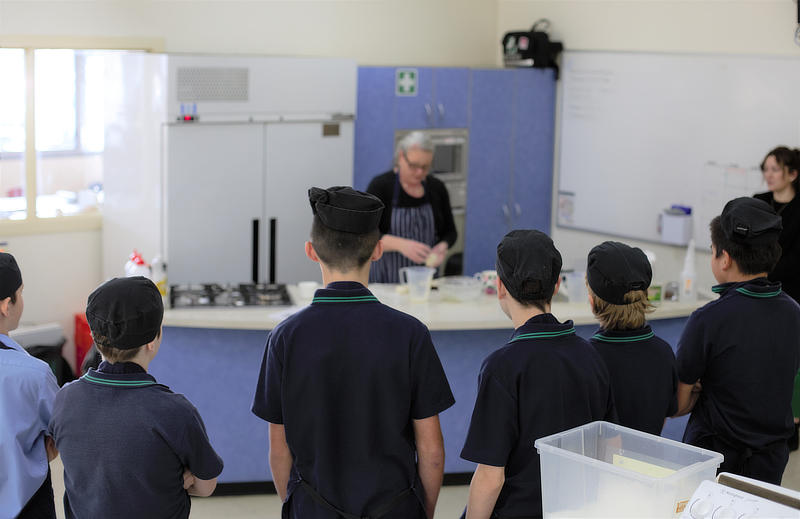

Careers Education
Career education at Carranballac college is based upon the Victorian Careers
Curriculum Framework. There are six steps in a young person’s acquisition of skills
for career development. These form the structure of the framework.
Year 7: I Discover
Year 8: I Explore
Year 9: I Focus
Year 10: I Plan
Year 11: I Decide
Year 12: I Apply

Goals at each step are organised into three stages
Self – development: young people understand themselves, build their experiences and achievements and develop their capabilities.
Career exploration: young people locate, investigate and consider opportunities in learning and future work options.
Career management: young people make and adjust career action plans and manage their life choices, changes and transitions.
Year 9 Career Education Focus Outcomes
Self-Development
Develop awareness of how individual characteristics such as interests, skills, values, beliefs and attributes contribute to achieving personal, social, educational and professional goals e.g., employability skills.
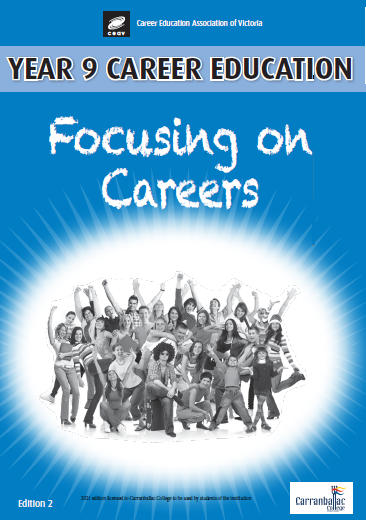
Assess how person characteristics are reflected in life, learning and work goals i.e., Participate in My Career Insights Profiling (Morrisby) Assessments

Recognise how stereotypes, biases and discriminatory behaviour may limit opportunities for people in the workplace.

Career Exploration
Explore and develop a variety of commonly used work search tools to find and maintain work i.e., resumes, cover letters, mock interview practice.

Develop an online ‘My Career Portfolio’ to be extended upon in Senior Secondary Education.

Participate in a variety of industry immersion experiences to explore different types of work and employment opportunities available e.g., VET Champion talks, online interactive opportunities/ workbooks.
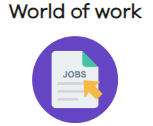
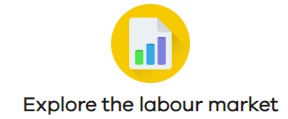
Career Management
Complete a flexible and adaptable short term career action plan

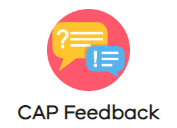
Participate in a 1-1 interview with a Career Counsellor to unpack results of Morrisby Assessments.
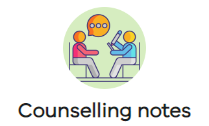
Use career information resources to locate information on occupational, industry, educational, social and economic trends i.e., myfuture website exploration


“Pathways prepares me to understand future schooling options”. – Martina
“Pathways motivates me to want to go somewhere in life”. – Kevin
“Pathways helps guide your possible career path”. – Wyatt
